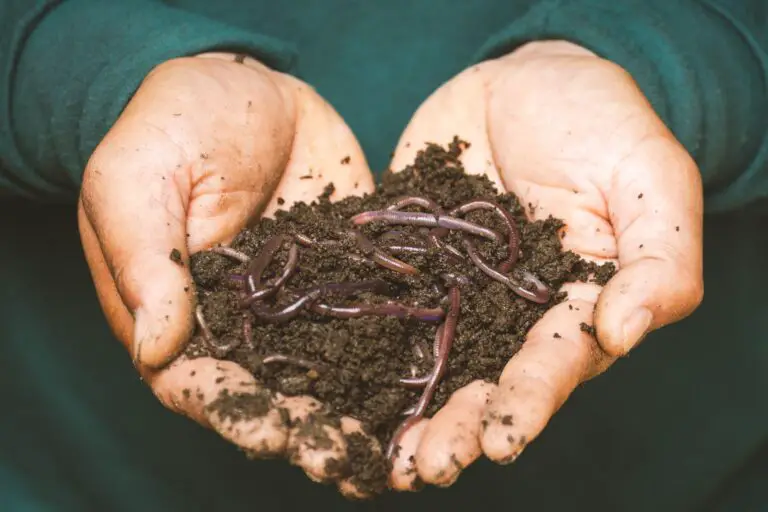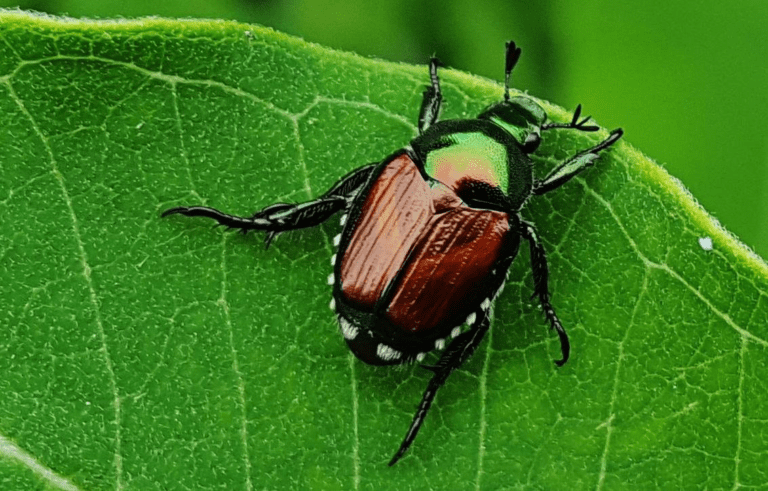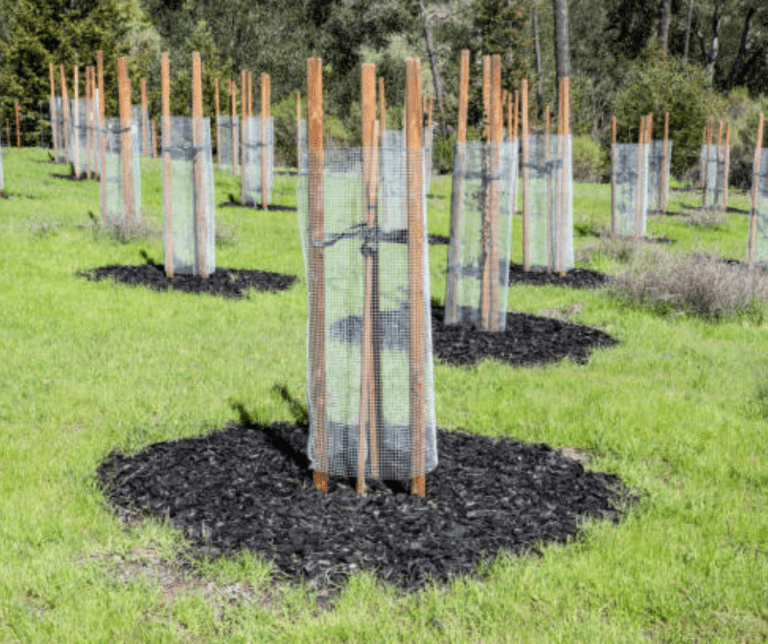Asparagus Beetle Management: Protecting Your Asparagus
Table of Contents
Signs of Asparagus Beetle Infestation
Asparagus beetles can wreak havoc on your asparagus plants if left unchecked. One of the primary signs of an asparagus beetle infestation is the presence of small, oval-shaped eggs that are typically laid on the spears or ferns of the asparagus plant. These eggs are usually dark in color and can be found in clusters, making them easier to spot.
Another visible indication of asparagus beetle infestation is the presence of adult beetles feeding on the asparagus foliage. These beetles are characterized by their distinct coloration, with the common asparagus beetle featuring a black body with cream-colored or yellow stripes, while the spotted asparagus beetle displays a more dotted appearance. Keep a watchful eye for these beetles as their feeding can quickly lead to defoliation of the asparagus plant, impacting its overall health and productivity.

Understanding the Life Cycle of Asparagus Beetles
Asparagus beetles, belonging to the genus Crioceris, go through a fascinating lifecycle that involves four distinct stages: egg, larva, pupa, and adult. The adult beetles lay tiny orange-colored eggs on asparagus plants, typically on the underside of the leaves. These eggs hatch into larvae that feed voraciously on the tender shoots and foliage of the asparagus plant. As they grow, the larvae molt several times before eventually entering the pupal stage where they transform into adults.
Once the pupal stage is complete, adult asparagus beetles emerge, ready to continue the cycle. These adult beetles are known for their distinctive black or blue-black bodies with red or yellow markings. As they feed on asparagus plants, they can cause significant damage, leading to stunted growth, reduced yields, and even plant death if the infestation is severe. Understanding the life cycle of asparagus beetles is crucial for implementing effective control measures and protecting your asparagus crop from potential devastation.
Below is the overview of the life cycle of asparagus beetles:
| Life Stage | Description |
| Overwintering | Adult beetles overwinter in field borders, under bark, or within the stems of old asparagus plants. Some burrow into the soil. |
| Spring Emergence | As spring arrives and new asparagus shoots grow, adult beetles emerge from their winter hiding places. They feed and mate. |
| Egg Laying | Female beetles lay dark brown, oval-shaped eggs on the asparagus spears. Eggs hatch within about a week. |
| Larval Stage | The light gray, slug-like larvae with black heads and legs migrate to the ferns and start feeding. Larvae feed for approximately two weeks. |
| Pupation | After feeding, the larvae fall to the ground and burrow into the soil to pupate. |
| Adult Stage | Within a couple of weeks, adults emerge from pupae and resume feeding. Beetles overwinter beneath plant debris, loose bark, or hollow stems of old asparagus plants, completing their life cycle in about eight weeks. |
Identifying Different Types of Asparagus Beetles
Asparagus beetles are a common pest that can wreak havoc on asparagus crops if left unchecked. There are two main types of asparagus beetles that gardeners should be aware of: the common asparagus beetle (Crioceris asparagi) and the spotted asparagus beetle (Crioceris duodecimpunctata).
The common asparagus beetle, as its name suggests, is the more prevalent of the two species. Adults are about ¼ inch long with a distinctive bluish-black color and three white or yellow spots on each wing cover. In contrast, the spotted asparagus beetle is slightly smaller, at around 1/5 inch long, with a reddish-orange body and 12 black spots on its wings. Both types of beetles feed on asparagus foliage, causing damage that can weaken the plants and reduce yields if not managed appropriately.
This table shows different types of asparagus beetles and their distinguishing features:
| Beetle Type | Description |
| Common Asparagus Beetle | Bluish: Black in color with red and white markings. Cream-colored or pale yellow spots along its back. Orangish or reddish border on its wings. Elongated head with feathery-looking antennae. Most common and devastating around asparagus plants. |
| Spotted Asparagus Beetle | Pumpkin-colored orange beetle with black spots (western United States). Medium to dark red beetle with black spots (eastern United States). Elongated head and almost feathery-looking antennae. Not as destructive as the common asparagus beetle but still feeds on asparagus. |
Both types of asparagus beetles can damage emerging asparagus spears, but the common asparagus beetle larvae and adults can also devour the ferns after the harvest season.
The Damage Asparagus Beetles Can Cause
Asparagus beetles, both the common asparagus beetle (Crioceris asparagi) and the spotted asparagus beetle (Crioceris duodecimpunctata), are notorious for the damage they can inflict on asparagus plants. These voracious pests feed on the foliage and stems of asparagus, causing significant defoliation and weakening the overall health of the plant. The larvae of these beetles also feed on the spears, causing them to become misshapen and reducing the quality and yield of the harvest.
Aside from directly feeding on the plants, asparagus beetles can also transmit plant diseases such as Fusarium wilt and asparagus virus. These diseases can further weaken the plants and lead to stunted growth, decreased productivity, and in severe cases, plant death. The combination of physical damage from feeding and the potential for disease transmission makes the presence of asparagus beetles a serious threat to asparagus crops, emphasizing the importance of prompt and effective management strategies to mitigate their impact.

Natural Predators of Asparagus Beetles
One of the natural predators of asparagus beetles is the minute pirate bug (Orius insidiosus). These tiny beneficial insects are known for feeding on both asparagus beetle eggs and nymphs, helping to reduce the pest population in gardens and farms. Minute pirate bugs are commonly found in a variety of crops and are considered a valuable ally in integrated pest management programs.
Another important predator of asparagus beetles is the lady beetle, also known as ladybug (Coccinellidae). Lady beetles are voracious predators of aphids, scale insects, and various other soft-bodied pests, including asparagus beetle eggs and larvae. By releasing or attracting lady beetles to the asparagus fields, gardeners can benefit from natural pest control without relying on chemical interventions. The presence of lady beetles not only helps in managing asparagus beetle populations but also contributes to the overall ecological balance of the agroecosystem.Cultural Control Methods for Asparagus Beetles
Cultural control methods for managing asparagus beetles involve a range of practices that can help reduce infestations without resorting to chemical interventions. One effective approach is to maintain good garden hygiene by removing garden debris and weeds, as these can provide hiding spots and breeding grounds for the beetles. Regularly inspecting asparagus plants for early signs of beetle activity, such as feeding damage or adult beetles, can also help catch infestations before they escalate.
Another cultural method is to encourage natural predators of asparagus beetles, such as ladybugs, lacewings, and parasitic wasps, by planting a diverse range of flowering plants that attract beneficial insects. Additionally, rotating asparagus crops with plants that are not vulnerable to asparagus beetles can help disrupt the pests’ life cycle and reduce their numbers over time. By incorporating these cultural control methods into your gardening practices, you can proactively manage asparagus beetle infestations while minimizing the need for chemical treatments.

Mechanical Control Methods for Asparagus Beetles
Mechanical control methods for managing asparagus beetles involve physically removing the pests from the plants. One effective method is handpicking the beetles and their larvae off the asparagus foliage. This requires regular inspection of the plants to catch the beetles early before they can cause significant damage. Placing a cloth or sheet underneath the plants while handpicking can help collect the beetles for easy disposal, reducing their numbers and minimizing the infestation.
Another mechanical control method is using a vacuum cleaner to suction the beetles from the plants. This method is particularly useful for large infestations where handpicking may be time-consuming. By carefully vacuuming the asparagus plants, the beetles can be removed without causing harm to the plant itself. However, it’s essential to empty the vacuum bag away from the garden to prevent the beetles from crawling back onto the plants.

Chemical Control Methods for Asparagus Beetles
Chemical control methods can be an effective way to manage asparagus beetle infestations in gardens and farms. One commonly used chemical option is the application of insecticides specifically formulated to target asparagus beetles. These insecticides work by disrupting the beetles’ nervous systems, ultimately leading to their demise. It is crucial to follow the manufacturer’s instructions carefully when using these products to ensure safe and effective application.
Another chemical control method for asparagus beetles involves the use of neonicotinoids, which are a class of insecticides that can be applied to the soil around asparagus plants. These insecticides can be taken up by the plants and provide systemic protection against asparagus beetles. However, it is important to note that neonicotinoids have been associated with negative impacts on pollinators, so caution should be exercised when using them in areas where bees and other beneficial insects are present.
Using Beneficial Insects for Asparagus Beetle Management
Beneficial insects can play a crucial role in managing asparagus beetle populations in an eco-friendly and sustainable manner. One such beneficial insect is the parasitic wasp, Tetrastichus asparagi, which targets asparagus beetle eggs. These tiny wasps lay their eggs inside the asparagus beetle eggs, preventing them from hatching and reducing the next generation of beetles.
Another beneficial insect that can aid in controlling asparagus beetles is the lady beetle, also known as the ladybug. Lady beetles feed on asparagus beetle eggs, larvae, and adults, helping to keep their numbers in check. By attracting and promoting these natural predators in your garden or asparagus field, you can reduce the reliance on chemical pesticides and promote a more balanced ecosystem for long-term sustainable pest management.
This table summarizes beneficial insects for asparagus beetle management:
| Beneficial Insect | Role in Control | Description |
| Parasitic Wasps | Attack egg stage | Tiny parasitic wasps, such as Tetrastichus asparagi, feed on asparagus beetle eggs and lay their own eggs inside them. The wasp larvae then develop within the beetle eggs, reducing their numbers. |
| Predatory Wasps | Eat beetle eggs | Black eulophid wasps are beneficial for your garden. They consume asparagus beetle eggs during spring and later lay their own eggs inside the beetle eggs. When the wasp eggs hatch, their larvae feed on the beetle eggs. |
| Other Beneficial Insects | Varies | Ladybugs, lacewings and spined soldier bugs can also also help by attracting or releasing beetles, thus preventing further damage. |
Preventive Measures to Avoid Asparagus Beetle Infestation
To prevent asparagus beetle infestation, implementing a few key strategies can help safeguard your asparagus crop. One essential preventive measure is to practice crop rotation by avoiding planting asparagus in the same location year after year. By rotating the planting beds, you disrupt the life cycle of the beetles, reducing the likelihood of a widespread infestation.
Furthermore, maintaining good garden hygiene is crucial in preventing asparagus beetle infestations. Removing and destroying any crop residues, including dried ferns and debris from the asparagus patch, can eliminate overwintering sites for the beetles. Additionally, keeping the garden area free of weeds and debris can help deter these pests from taking up residence in your asparagus beds. By incorporating these preventive measures into your gardening routine, you can proactively protect your asparagus plants from beetle damage.
Monitoring Asparagus Beetle Populations
When monitoring asparagus beetle populations in your garden, it is crucial to regularly inspect your asparagus plants for the presence of both adult beetles and larvae. Adult asparagus beetles are typically about 6-9 millimeters long, with a shiny bluish-black body and reddish-orange spots on their wing covers. Meanwhile, the larvae are small and slug-like, with a black head and grayish-green body. These pests can quickly multiply and cause significant damage if left unchecked, so vigilance is key in early detection and control.
One effective method for monitoring asparagus beetle populations is using yellow sticky traps placed near the asparagus plants. The bright yellow color attracts the beetles, who get stuck on the adhesive surface when they land on the trap. By regularly checking and counting the number of beetles caught on the traps, you can gauge the level of infestation and take appropriate action to manage the population. Additionally, scouting the plants visually for signs of feeding damage, such as defoliation and egg-laying sites, can provide valuable insights into the presence and activity of asparagus beetles in your garden.
Integrated Pest Management Strategies for Asparagus Beetles
When implementing Integrated Pest Management (IPM) strategies for controlling asparagus beetles, it is crucial to start with preventive measures to minimize infestations. One effective approach is to regularly inspect plants for early signs of beetle presence, such as feeding damage or egg clusters. By catching infestations early, you can intervene before populations escalate and cause significant harm to your asparagus crop. Additionally, practicing good garden hygiene by removing debris and weeds can help reduce shelter and breeding sites for beetles, thereby lowering their numbers in the long run.
Cultural control methods play a vital role in managing asparagus beetles sustainably. Utilizing crop rotation can disrupt the lifecycle of beetles by moving host plants to new locations, making it harder for them to establish thriving populations. Furthermore, planting companion crops that repel beetles or attract natural predators can act as a form of biological control. By diversifying your planting scheme and creating a less hospitable environment for asparagus beetles, you can maintain a healthier balance in your garden ecosystem.
Below is a table showing Integrated Pest Management (IPM) strategies for managing asparagus beetles, particularly the common asparagus beetle:
| Strategy | Description |
| 1. Slow Infestation Build-Up | Ensure that infestations in new crops build up as slowly as possible. |
| 2. Targeting Adults on Emerging Spears | Do not apply ineffective insecticides to adults on emerging asparagus spears. Use effective products with a short harvest interval (such as cypermethrin and natural pyrethroids). |
| 3. Targeting Adults and Larvae on the Fern | Manage existing infestations with insecticides at times when they are most likely to be effective. A longer harvest interval is acceptable here to prevent damage to the growing crop and reduce overall beetle population. |
| 4. Avoid Harmful Insecticides | Avoid using insecticides that are harmful to natural enemies (such as spiders and lacewing larvae) and bees when these beneficial organisms are abundant in the crop. |
Remember, developing an integrated pest management strategy allows us to reduce reliance on chemical pesticides and maximize the impact of natural enemies.
Organic Approaches to Managing Asparagus Beetles
One effective organic approach to managing asparagus beetles is through the use of neem oil. Neem oil, derived from the seeds of the neem tree, acts as a natural insecticide and repellent, disrupting the feeding and reproductive behavior of asparagus beetles. By applying neem oil to the asparagus plants according to the manufacturer’s instructions, gardeners can help deter these destructive pests in an environmentally friendly manner.
Another organic method for controlling asparagus beetles is introducing beneficial insects to the garden ecosystem. Ladybugs, lacewings, and parasitic wasps are natural predators of asparagus beetles and can help keep their populations in check. By attracting and fostering these beneficial insects through diverse plantings, reduced pesticide usage, and providing suitable habitats, gardeners can create a more balanced and sustainable environment that naturally regulates asparagus beetle populations.
Tips for Successful Asparagus Beetle Management
To effectively manage asparagus beetle infestations in your garden, it is crucial to implement a combination of preventive measures and control strategies. Start by regularly monitoring your asparagus plants for early signs of beetle presence, such as feeding damage and eggs on the foliage. Promptly remove any beetles, larvae, or eggs by hand to prevent population buildup. Additionally, consider planting companion plants like tomatoes or marigolds, which can act as natural repellents against these beetles.
Furthermore, practicing crop rotation can help disrupt the life cycle of asparagus beetles, reducing the likelihood of infestations in subsequent seasons. By moving your asparagus patch to a different location each year, you can limit the buildup of beetle populations in the soil. Lastly, maintaining proper soil fertility and moisture levels can promote healthy plant growth, making them more resilient to beetle damage. Incorporating these tips into your gardening routine can go a long way in effectively managing asparagus beetle populations and preserving the health of your asparagus plants.
Resources for Further Information on Asparagus Beetle Control
For those looking to delve deeper into the realm of asparagus beetle control, various resources are available to expand your knowledge and aid in managing these pesky pests effectively. Online forums and discussion groups can provide valuable insights and real-life experiences from fellow gardeners and experts who have dealt with asparagus beetles firsthand. Additionally, books and publications dedicated to pest management in agriculture often contain comprehensive sections on tackling asparagus beetle infestations, offering detailed strategies and tips for successful control.
Furthermore, agricultural extension services and online portals run by reputable universities can be excellent sources of in-depth information on managing asparagus beetles. These platforms typically provide research-based recommendations, fact sheets, and guides that can help you understand the behavior of asparagus beetles better and implement integrated pest management strategies tailored to your specific gardening practices. By exploring these valuable resources, you can equip yourself with the knowledge and tools necessary to safeguard your asparagus crops from the detrimental effects of beetle infestations.
Are there any natural predators of asparagus beetles?
Yes, some natural predators of asparagus beetles include ladybugs, lacewings, and parasitic wasps.
What are some preventive measures that can be taken to avoid asparagus beetle infestation?
Some preventive measures include removing plant debris in the fall, rotating asparagus crops, and planting asparagus away from other beetle-attracting plants.
How can beneficial insects be used for asparagus beetle management?
Beneficial insects such as predatory beetles and parasitic wasps can be introduced into the garden to help control asparagus beetle populations.
What are some organic approaches to managing asparagus beetles?
Organic approaches include using neem oil, insecticidal soap, or diatomaceous earth to control asparagus beetles without the use of synthetic chemicals.
How can integrated pest management strategies be used to control asparagus beetles?
Integrated pest management involves combining cultural, mechanical, biological, and chemical control methods in a holistic approach to manage asparagus beetle populations effectively.







